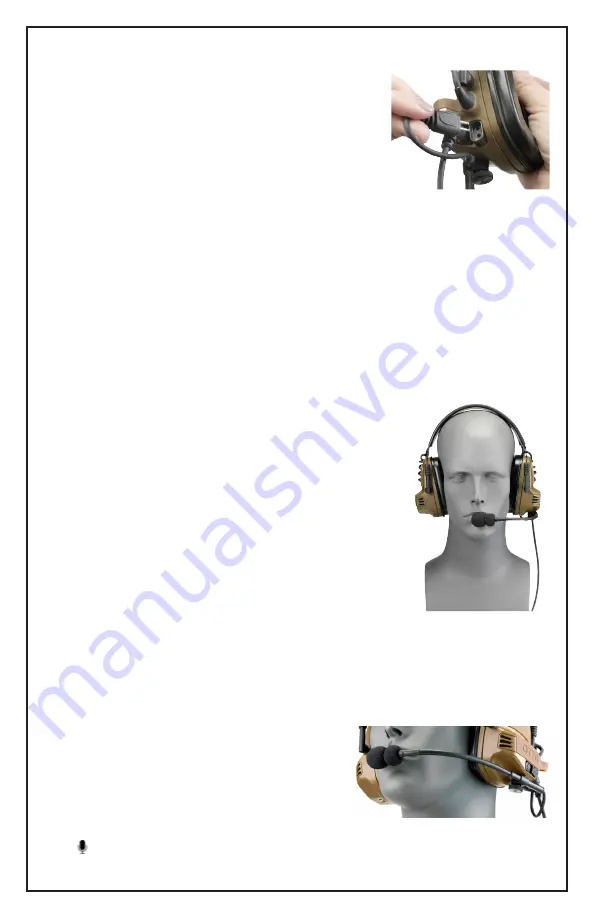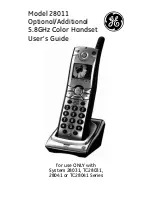
7
Configuring the Boom Microphone
(Figures 7 & 8)
The boom microphone is commonly worn on the left side
but can be installed on either the left or right ear cup. To
move the mic from one side to the other:
1. Identify and pull out the two-pin plug that attaches the
boom mic to the ear cup
(Figure 7).
2. Unscrew the knurled screw that attaches the boom
assembly to the bottom of the ear cup.
3. Remove the knurled screw from the locking clamp and
reverse it so that the clamp will position the boom at the
outboard position on the headset.
4. Position the boom under the opposite ear cup, and thread the screw in to the ear cup.
5.
Re-orient the boom so that the mic symbol faces the user’s mouth.
6. Tighten the knurled screw until boom is secured.
7. Plug the two-pin plug into the jack at the back of the new ear cup. Note that the rubber
insert for the plug has an offset shape so that it will only insert in one direction.
Wearing the Headset
(Figure 9)
(Note: If mounting the headset to the helmet with the op
-
tional Rail Mounting Kit, please see instructions beginning on
page 10.)
1. Identify the left and right ear cups. The Power/Volume
buttons are on the left ear cup.
2. Place the headset over the head.
3. Adjust ear cup height by pulling or pushing on the cups
until the ear seals are securely positioned over the ears.
Adjustment is accomplished by extending and contract
-
ing the ear cup frames on either side of the ear cups
while holding the headband in place.
4. For effective sound protection, be sure that the ear seals
are completely sealed around the ear and obstacles such as
hair, jewelry, or clothing are out of the way.
Boom Mic Placement
(Figure 10)
The boom is flexible and has a length adjustment screw to ensure proper placement for
effective communications.
1. Position the boom microphone so that the micro
-
phone is about ¼ inch from the mouth.
2. To adjust boom length, loosen the screw, position
the mic at the desired length, and re-tighten.
3. Position the mic element so that the mic symbol
on the boom faces directly toward the user’s
mouth.
Figure 7
Figure 9
Figure 10































